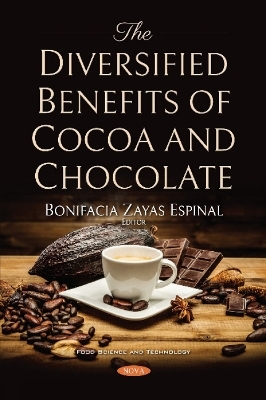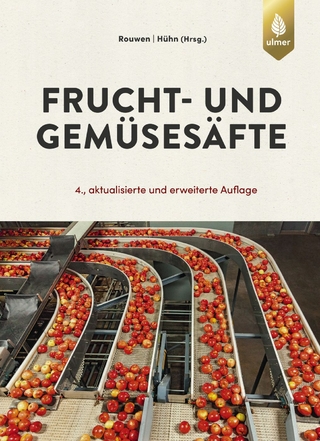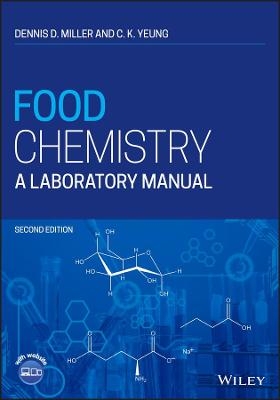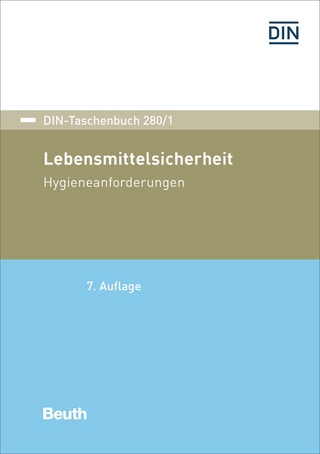
The Diversified Benefits of Cocoa and Chocolate
Seiten
2018
Nova Science Publishers Inc (Verlag)
978-1-5361-3258-8 (ISBN)
Nova Science Publishers Inc (Verlag)
978-1-5361-3258-8 (ISBN)
The Diversified Benefits of Cocoa and Chocolate begins with an analysis of Theobroma cacao L, a species that is cultivated for butter and chocolate production. This fruit is a drupe comprised of a husk, mucilage and seed, with the potential for each one of these parts to be used for different purposes. Next, a chapter is included which discusses the cocoa plant, contributing to clarifying its phytochemical function and chemical structure. The cocoa plant produces purine type alkaloids or methylxanthines, fatty acids, amines, polyamine and derivates, and polyphenols, each one of them having a specific function in the plant. A separate chapter discusses probiotics, live microorganisms; which when administered in adequate amounts confer health benefit to the host. Probiotics are available in the form of foods, drugs, and dietary supplements. The authors discuss the definition and properties of probiotics, their survival factors, as well as the potential health effect of probiotic strains. The authors go on to highlight the versatility, nutritional and culinary practices of cacao, chocolate and copulate, as well as the use of both products as elements in the sweet and savory cuisine. The authors go on to maintain that due to their versatility, byproducts prepared with Theobroma cacao and grandiflorum are traditional, contemporary in a variety of beautiful and fancy dishes in the gourmet cuisine. Couverture, powder, liquor, nibs, and butter are essential in the preparation of gourmet food. The versatility, nutritional and culinary practices of cacao, chocolate and copulate are highlighted, in addition to the use of both products as elements in the sweet and savory cuisine. Later, the different available methodologies for analysis, quantification, isolation, purification, and structure elucidation of polyphenols in cocoa and cocoa-derived products are reviewed. Taking into account that there is evidence that demonstrates that the bioactivity of flavanols is significantly influenced by their stereochemical configuration, enantioselective methods have also been included such as chiral capillary electrophoresis, micellar electrokinetic chromatography and ultra-performance liquid chromatography. The authors state that about forty million people die annually as a consequence of noncommunicable diseases accounting for approximately 70% of all death globally. Therefore, the current research concerning the benefits of dark chocolate regarding noncommunicable diseases and the associated risk factors is examined. Following this, a study carried out in the Fako division is presented. The principal objective of this work was to evaluate the floristic diversity and biomass quantity of three different categories of cocoa agro forest, and the plot or quadrate method was used to collect the floristic data. A subsequent chapter introduces chocolate as a cocoa carrier of probiotics and bioactive whey protein hydrolysate. This research examined the influence of additional ingredients on the functional properties and rheology of the final product. The potential health benefits of cocoa and dark chocolate are discussed. It is clearly demonstrated that cocoa components have an important antioxidant, anti-inflammatory and photo-protective role in pathologies, including: cognitive impairment, inflammatory bowel disease, dental health, skin photo-protection and cancer. Another study is included with the objective of exploring the potential of NIR usage for monitoring the cocoa powder and sugar mixtures composition. Based on the obtained results, NIRs analysis in combination with the PCA and the PLS has proved to be an adequate, fast and non-invasive method for the cocoa powder drink mix composition prediction. A separate study attempts to confirm the relationship between increased pollinator abundance and higher yields of cocoa pods at one locality in Costa Rica. While cocoa pollination can depend upon a diverse array of ceratopogonid midges, in this study, one species Forcipomyia youngii, dominated the samples. Research is included with the aim of assessing the proteins contents, digestibility, and amino acid profile of the milled cocoa bean husks from the roasted cocoa, and to propose it as an ingredient for PKU food formulations. The authors determine that Cocoa can be used as a raw material in products destined for special regimes, after verification of its microbiological safety. The final study examined and compared the content of total polyphenols, minerals (potassium, calcium, magnesium, iron, zinc, copper, manganese), total dietary fiber and soluble dietary fiber in in different chocolate products collected from the market.
For more information, please visit our website at:Softcover: https://www.novapublishers.com/catalog/product_info.php?products_id=64068E-book: https://www.novapublishers.com/catalog/product_info.php?products_id=64069
| Erscheinungsdatum | 08.06.2018 |
|---|---|
| Verlagsort | New York |
| Sprache | englisch |
| Maße | 152 x 229 mm |
| Gewicht | 264 g |
| Themenwelt | Technik ► Lebensmitteltechnologie |
| ISBN-10 | 1-5361-3258-6 / 1536132586 |
| ISBN-13 | 978-1-5361-3258-8 / 9781536132588 |
| Zustand | Neuware |
| Haben Sie eine Frage zum Produkt? |
Mehr entdecken
aus dem Bereich
aus dem Bereich
Technologie, Chemie, Mikrobiologie, Analytik, Bedeutung, Recht
Buch | Hardcover (2023)
Verlag Eugen Ulmer
140,00 €


